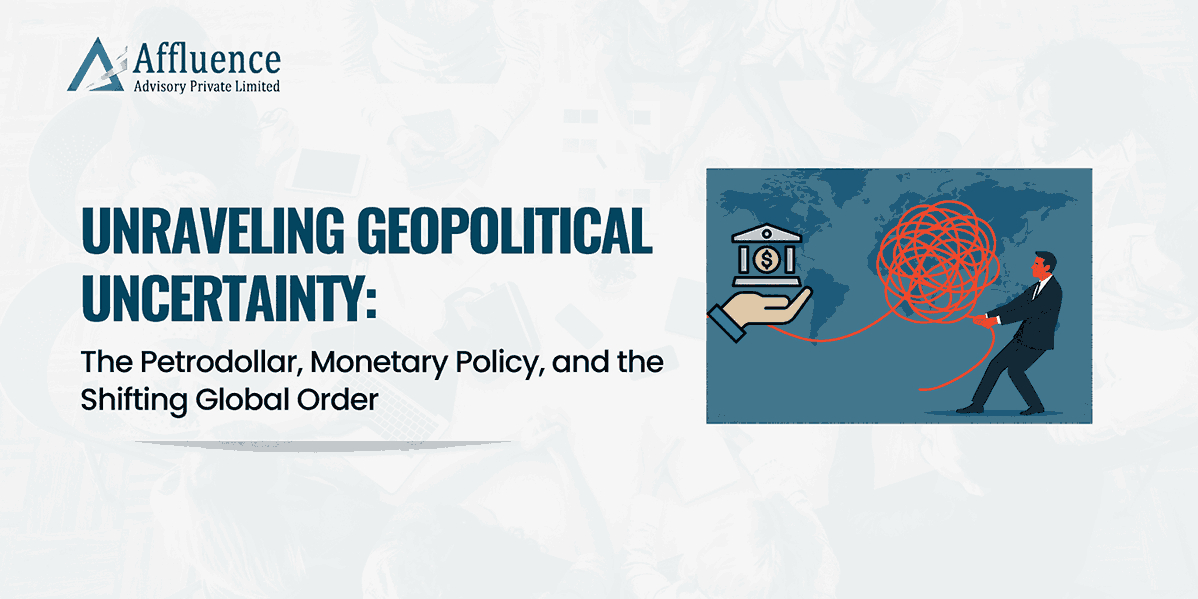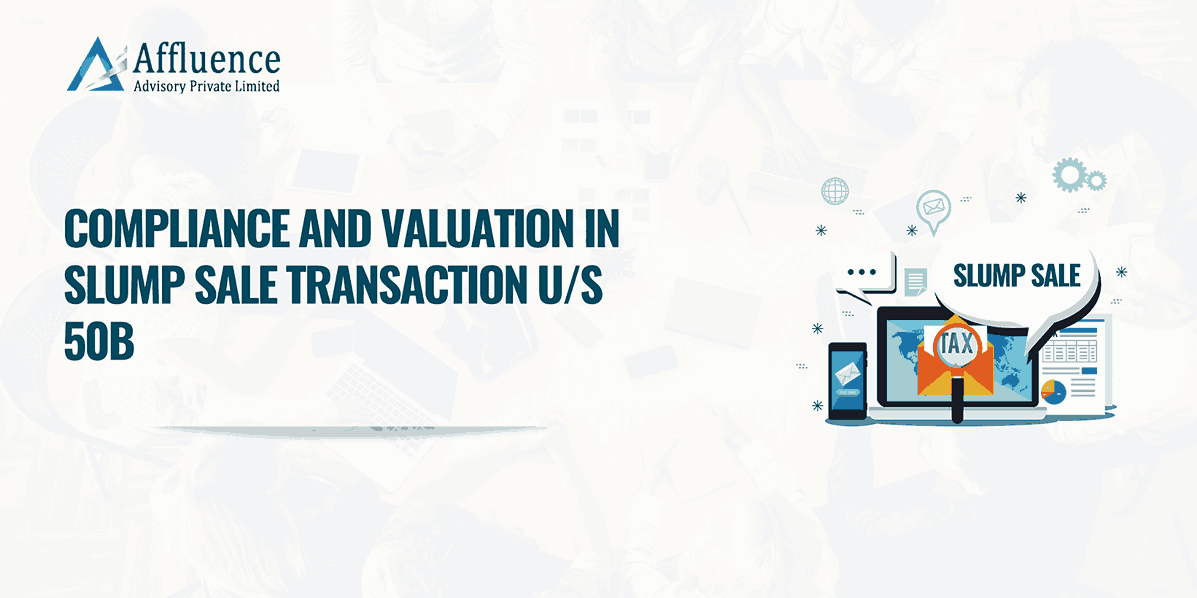Author: Ankit Baid, Research Analyst at Affluence Advisory
In the ever-evolving theatre of global economics, understanding the pulse of geopolitical uncertainty requires looking beyond the headlines and deep into the currents of history that have sculpted today’s financial architecture. The world order as we know it—where the U.S. dollar reigns supreme and the influence of monetary policy echoes far beyond national borders—didn’t emerge by accident. It is the product of diplomatic maneuvering, historic turning points, and the pragmatic leverage of economic power.
The Seeds of Dollar Dominance: From Bretton Woods to Petrodollars
To appreciate why the United States sits at the heart of global finance, one must journey back to the aftermath of World War II, when the Bretton Woods system tied global currencies to the dollar, itself pegged to gold. This arrangement cemented the dollar’s role as the backbone of international trade. However, as the U.S. found itself embroiled in expensive wars and mounting fiscal deficits in the latter part of the 20th century, it began what some might call a monetary sleight-of-hand—printing dollars unbacked by commensurate gold reserves.
Other nations, sensing the erosion of intrinsic value, began voraciously purchasing gold, driving its price from $80 to $280 an ounce. This run on gold ultimately broke the system: in 1971, the U.S. de-linked the dollar from gold, allowing its currency to float freely and ushering in a new era—the age of fiat money. Now, understand—or re-read—this: when nations lose trust in fiat currencies, it is real assets that rally, and countries begin hoarding gold, as it was once a neutral reserve before the dollar gained significance as the world’s primary reserve currency.
But America’s financial ingenuity didn’t end with abandoning gold. Facing the peril of a dollar in decline, the U.S. struck a monumental deal with Saudi Arabia: military protection for the Saudi monarchy in exchange for a simple yet policy-defining request—that oil be priced exclusively in U.S. dollars. Thus, the petrodollar system was born. Global economies, compelled to purchase oil in dollars, and countries without direct access to the greenback were forced to either borrow from the U.S. or purchase U.S. Treasuries to acquire the dollars needed to buy oil—the so-called “black gold.” Saudi Arabia, in turn, had little choice but to accumulate—and recycle—these dollars back into U.S. Treasury markets.
This created a self-reinforcing cycle of low-cost borrowing. (Remember: when bond prices go up, yields go down.) The U.S. famously became the world’s indispensable banker, borrowing at low cost to fuel its economic dynamism.
Also Read: When AI Steals Your Entry-Level Gig(Don’t Worry—UBI’s (Universal Basic Income) on the Way)
The Shifting Tides: Trade Wars, New Power Centres, and Financial Fragility
For decades, this system created a virtuous cycle—or some might say a one-sided trade—through which the U.S. exerted outsized influence. It achieved this not only by importing goods through reduced tariffs and outsourcing manufacturing to the rest of the world (RoW), but also by exporting its currency. As one well-known fund manager put it, “It is the duty of the reserve currency to share its GDP, policing the trade line and providing military umbrella – all these comes at cost and the US was writing the cheque.” The U.S. had effectively outsourced nearly everything to the RoW. Countries were paid in dollars for their exports to the U.S., and those dollars inevitably flowed back into the U.S. financial system through the purchase of Treasuries and with money flowing in the economy and hands of people.
Now, someone might ask: Why did the U.S. outsource its manufacturing base to the rest of the world?
The answer lies in both historical context and strategic intent.
After World War II, Europe and Japan—rebuilt with U.S. financial aid—developed advanced manufacturing techniques and superior quality systems. At the same time, the U.S. shifted its focus toward innovation, early-stage research, and high-value services.By the 1980s and beyond, emerging financial models and shareholder pressures encouraged large U.S. corporations to streamline operations. This meant outsourcing or offshoring any function not considered a “core competency.” Most importantly, this shift also aligned with America’s broader strategic goal: to internationalize the dollar.
And what better way to do that than by making the rest of the world the factory, while the U.S. remained the consumer, financier, and issuer of the reserve currency? There you have your answer.
Yet power is never static. As China’s economic rise began to challenge American dominance, the global balance started to shift. With its manufacturing strength and growing export influence, China threatened to upend the established order. In response, the U.S. began pivoting inward, employing new forms of economic pressure: tariffs, trade wars, and increasingly assertive rhetoric around national interests.
What’s Happening Now?
The post-COVID decade has upended many long-standing market correlations that held true for decades. For instance, it was widely believed that a rise in bond yields would lead to a fall in equity markets and gold prices. But that relationship has broken down. Gold prices have surged, even as yields remain elevated. Why? Yes, uncertainty is a factor—but what truly triggered this rally? And why is the U.S. dollar not strengthening, as it usually does during periods of global stress or panic?
Typically, in uncertain times, investors rush toward the U.S. dollar as a safe haven. But this time, that flight to safety hasn’t materialized in the usual way. Meanwhile, the U.S.—after decades of painstaking negotiations, alliances, and deals to maintain its global financial leadership—is now seemingly stepping back from the very umbrella it once held tightly. The question is: why?
Why Is Gold Shining So Bright?
To understand the gold rally, look no further than what happened after Russia’s invasion of Ukraine. In response, the U.S. froze Russia’s foreign assets held in dollars—a move that sent shockwaves through central banks worldwide. Suddenly, the safety of dollar-denominated foreign currency assets (FCA) was in question. What good are reserves if they can be frozen?
This triggered a global re-evaluation of reserve composition. Most countries hold a significant portion of their reserves in dollars. But after this incident, they were caught in a dilemma: they needed dollars to trade—especially for commodities like oil—but they could no longer fully trust the safety of those reserves. The search for a politically neutral and reliable store of value intensified. Gold has historically served as a neutral reserve asset. After the 1970s, its role diminished as the dollar gained dominance, but that role is now resurging. Central banks around the world began quietly—but aggressively—buying gold to diversify their reserves and reduce exposure to the dollar. If you look at the data, the dollar’s share of global reserves is falling, while gold is making a slow but steady comeback.
As we noted earlier: when nations lose trust in fiat currencies, it’s real assets—like gold—that rally. And gold still has a lot of steam left. Also an intriguing fact Gold is one of the few asset classes that has historically maintained purchasing power parity with inflation.
The U.S. Turns Inward, Lifting the Umbrella It Once Held
In 1989, during the peak of Japan’s economic boom, the land under Tokyo’s Imperial Palace was worth more than all of Manhattan. At the time, Japan accounted for 18% of global GDP but a staggering 48% of global equity markets. That moment marked the high point of Japan’s exceptionalism—soon followed by a deep and prolonged crisis.
History has shown a recurring pattern. Whether it was Spain, the Netherlands, the United Kingdom, or now the United States, all dominant empires shared a common feature: war—and more importantly, the cost of funding wars. That burden ultimately led to their financial exhaustion and decline. With rising debt levels, the collapse became inevitable. The U.S. is now at a similar crossroads. As Donald Trump once alluded, “history may not repeat itself, but it often rhymes.”
The U.S. no longer wants to be the world’s policeman—piling on debt to fund wars or providing open-ended military protection. It is becoming increasingly inward-looking, reshaping global supply chains, promoting regionalization, and actively encouraging a weaker dollar. After decades of allowing others to grow at its expense, the U.S. now appears less willing to share its GDP.
The new focus is domestic: tackling its own problems like fiscal deficits, inflation, and currency management. Power has shifted from central banks to governments, ushering in a new era of fiscal dominance. In this era, policymakers prioritize a hot economy, low interest rates, rising nominal GDP, and currency weakness to support re-shoring and rebuild domestic industrial strength.
At the same time, the U.S. is leveraging its most powerful asset—its role as the world’s largest importer. When you’re the biggest market, you have the most bargaining power. The U.S. is now using that leverage to renegotiate trade relationships on terms more favorable to itself.
Let’s not forget: the two largest democratic consumer markets in the world are the United States and India. No exporting nation wants to lose access to either.
How Is the U.S. Managing to Shoulder Its Massive Debt?
What seems like a chaotic mix of policy shifts and asset bubbles might actually be a calculated strategy—a masterstroke unfolding quietly beneath the surface.
Here’s how the pieces fit together:
a. Pushing Gold Prices Up
A rising gold price effectively weakens the U.S. dollar in relative terms. This isn’t just a market reaction to uncertainty—it’s part of a broader narrative where real assets regain importance as faith in fiat currencies erodes. Also a weak dollar helps the economy in re-shoring activities.
b. Fueling the Rise of Bitcoin and Crypto Market Cap
As crypto prices surge, stablecoins—many of which are pegged to the U.S. dollar and backed by U.S. Treasury bills—become more valuable and more widely used. Ironically, crypto adoption reinforces will there by lead more issuances of treasury bills (Short term), there by shifting the borrowing from long side to short side as it is much more beneficial because lower rates guides the short term market and falls in rates the refinancing becomes easier.
c. Encouraging Americans to Buy Gold and Bitcoin
Pro-crypto policies, including the approval of Bitcoin ETFs, the legitimization of crypto assets, and relaxed regulations, serve a purpose: they build domestic support for a financial system less reliant on dollar supremacy. This creates a narrative where Bitcoin and gold become legitimate alternatives for reserve storage—gradually setting the stage for a post-dollar reserve regime.
The Stealth Monetary Reset
Such a coordinated shift achieves three things at once:
- Inflates the value of BTC and gold
- Devalues the U.S. dollar
- Resets the global financial system around neutral, apolitical reserve assets
- Lower interest rates keep debt servicing cheap, while a hot economy boosts nominal GDP—making debt appear smaller over time.
The Strategy: Inflate the Debt Away
Once dollar debasement begins and the economy runs hot, the equation favors debtors—hurting creditors. Inflation quietly erodes the real value of debt, letting the U.S. “inflate it away” without defaulting. Ring a bell?
We’ve seen this playbook before. But this time, it’s being executed subtly—under the cover of trade wars, supply chain realignments, and geopolitical shifts. While the world focuses on tariffs and tech bans, the real game may be playing out in monetary terms.
The U.S., it seems, is pulling off a quiet but powerful financial reset—using gold, crypto, and the narrative of economic nationalism to regain control over a system it once willingly globalized.Bottom of Form
Conclusion: Navigating the Mocktail of Modern Uncertainties
In this complex world, dominated by the inertia of historical agreements and the volatility of contemporary politics, the only certainty is that of ongoing change. The U.S., through its clever orchestration of the dollar’s status, secured a commanding position—but not an unassailable one. As economic alliances shift and new centres of power emerge, nations large and small must navigate uncertainties with unprecedented agility.
The mocktail of global uncertainty, to borrow a metaphor, is blended from a mix of historical precedent, economic necessity, and political opportunism. To read today’s headlines with enlightenment is to recognize that yesterday’s decisions echo powerfully, and tomorrow’s stability depends on how well we learn from our monetary past.
Disclaimer: This article provides general information existing at the time of preparation and we take no responsibility to update it with the subsequent changes in the law. The article is intended as a news update and Affluence Advisory neither assumes nor accepts any responsibility for any loss arising to any person acting or refraining from acting as a result of any material contained in this article. It is recommended that professional advice be taken based on specific facts and circumstances. This article does not substitute the need to refer to the original pronouncement.
CLICK HERE DOWNLOAD PDF








